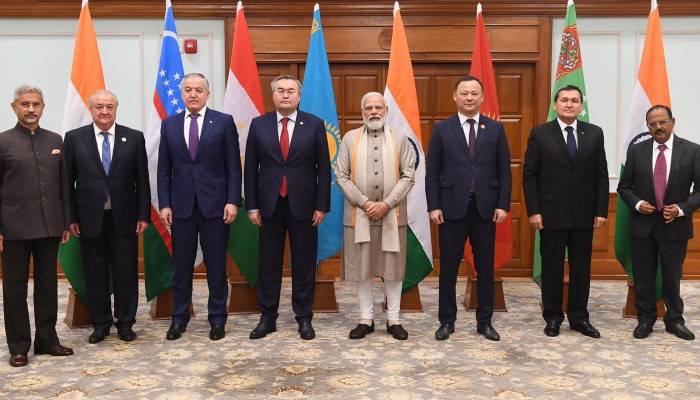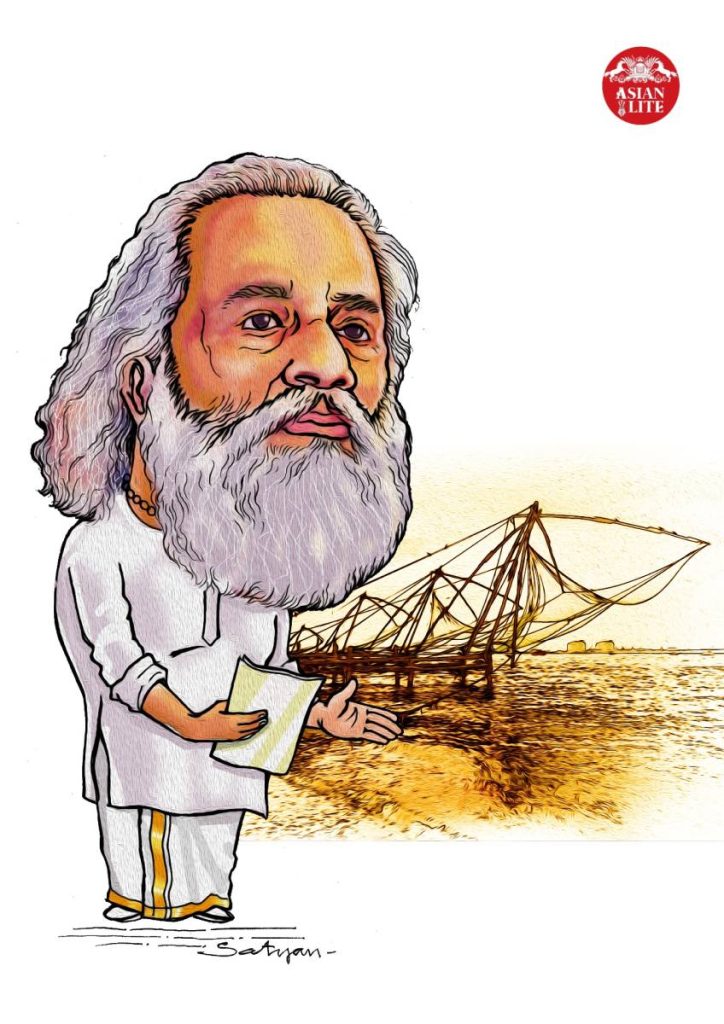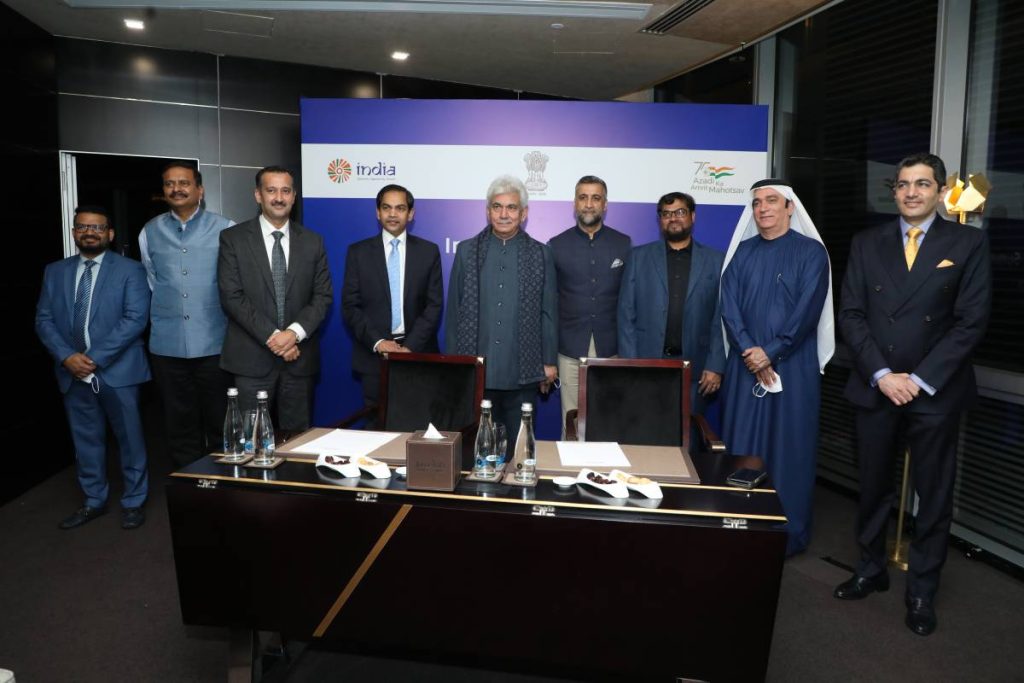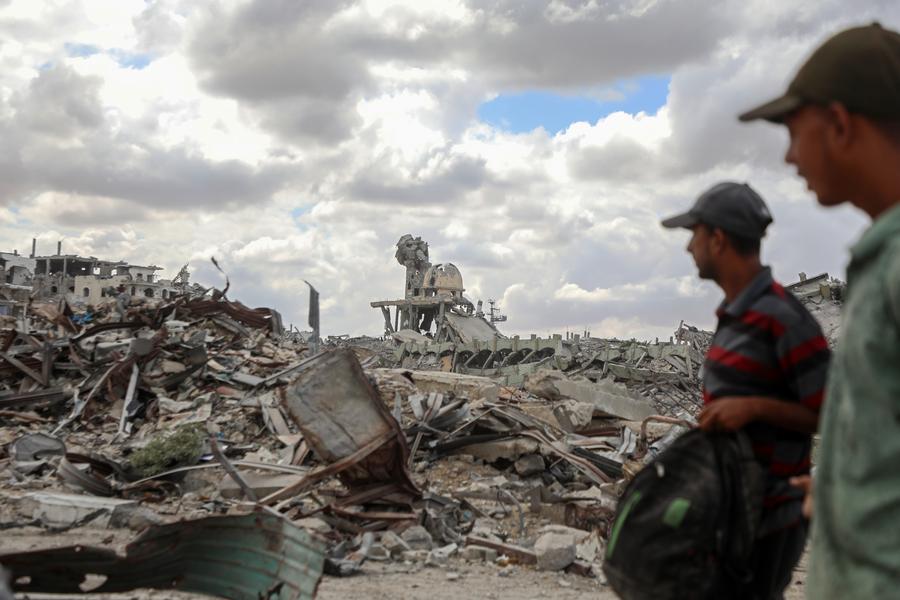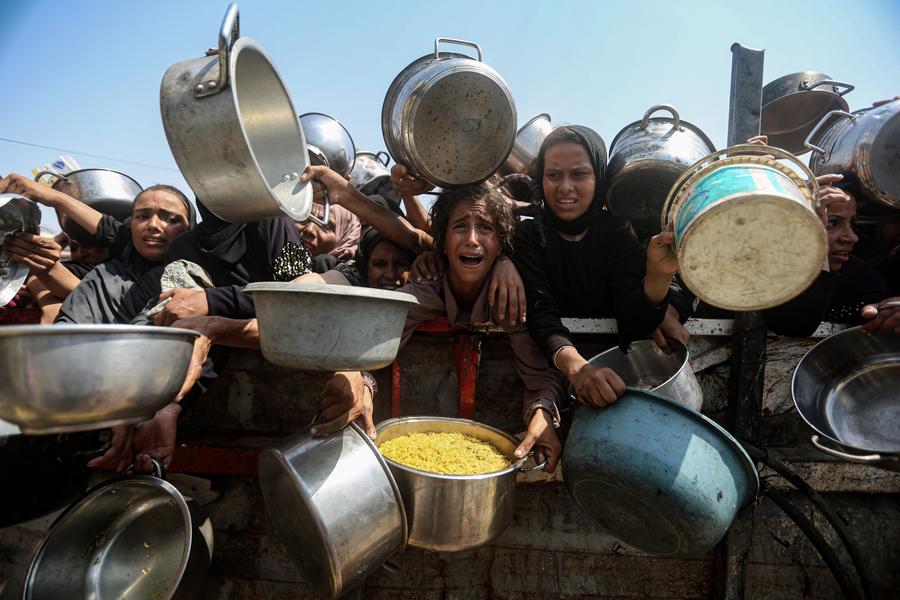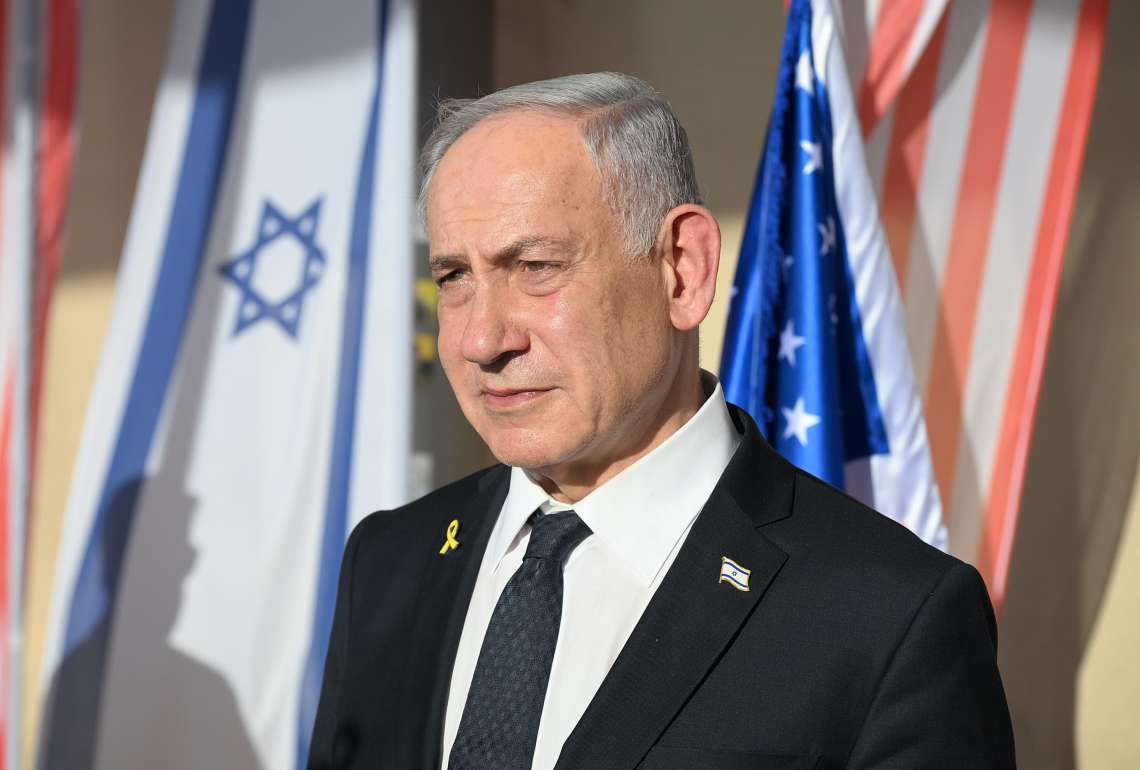The five Central Asian countries – Kazakhstan, Kyrgyzstan, Tajikistan, Turkmenistan, and Uzbekistan – are of immense strategic significance for India, and the invitation to all countries together, could not have come at a more opportune time, writes Lt Gen (Dr.) Subrata Saha
On its 73rd Republic Day on 26 Jan 2022, India has invited the Heads of State of the five Central Asian Republics – Kazakhstan, Kyrgyzstan, Tajikistan, Turkmenistan, and Uzbekistan, as Chief Guests.
The five Central Asian countries are of immense strategic significance for India, and the invitation to all countries together, could not have come at a more opportune time. It is the 30th anniversary of establishment of diplomatic relations between India and Central Asian countries. Moreover, with the evolving security scenario post US withdrawal from Afghanistan, and China’s Belt & Road Initiative, the international equations in the region are becoming more dynamic.
In his speech at the Shanghai Cooperation Organization (SCO) on 17 September 2021, Prime Minister Narendra Modi had dwelt on how Central Asia had been a bridge between various regional markets at different points in history. He said India was committed to increasing its connectivity with land-locked Central Asia in the 21st Century.
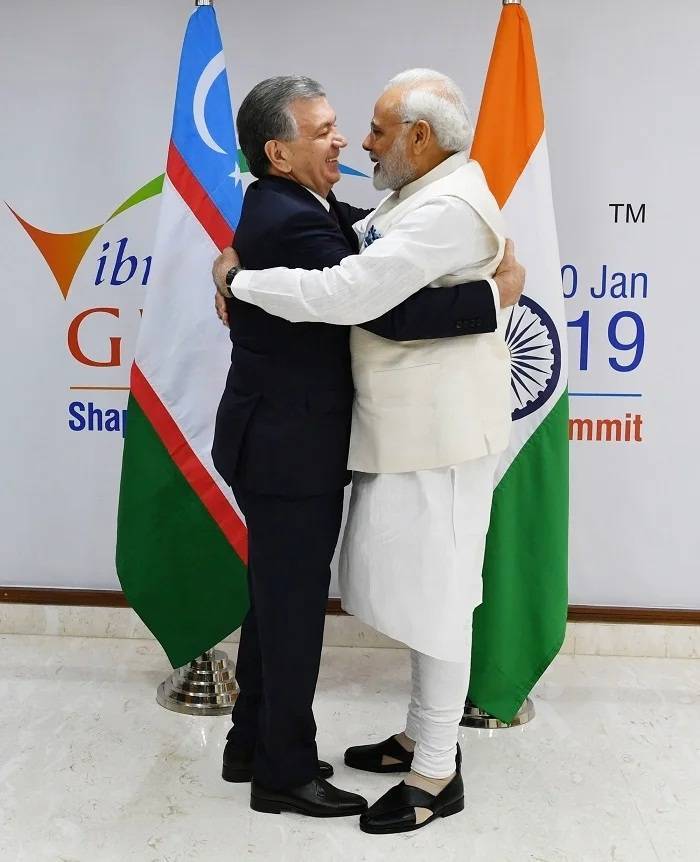
The commitment to build a comprehensive and enduring India-Central Asia partnership, was reaffirmed at the recently concluded 3rd meeting of the India-Central Asia Dialogue in New Delhi on 19 December 2021, hosted by External Affairs Minister S Jaishankar, and attended by the Foreign Ministers of all the five countries. Earlier on 10 November 2021, the National Security Advisors of the five countries (alongside Iranian and Russian counterparts) had met in Delhi for the 3rd Regional Security Dialogue on Afghanistan chaired by NSA Ajit Doval to draft a common approach to combat terrorism and drug trafficking from Taliban-ruled Afghanistan.
India’s 2012 “Connect Central Asia” policy, which had a broad-based approach with political, security, economic, and cultural connections as its cornerstones, is finally gaining momentum.
The Central Asian Region lies at the crossroads of Russia, the Middle East, South Asia, and the Far East. This region between Pamir mountains and Aral Sea is energy resource rich. With the breakdown of the Soviet Union in 1991, the five Central Asian countries gained independence. The countries of the region adjoin the two most dynamic geostrategic nations – Afghanistan and China. Tajikistan, Turkmenistan and Uzbekistan share 1350 km, 744 km, and 150 km border respectively with Afghanistan. Kazakhstan, Kyrgyzstan, and Tajikistan share 1700 km, 1063 km, and 477 km borders with China respectively.
Central Asia is vital for global energy security. According to the energy giant BP’s ‘Statistical Review of World Energy 2021’, Kazakhstan’s proven oil reserves stand at 5.4 thousand billion barrels (1.7% of global reserves) while Turkmenistan and Uzbekistan’s oil reserves stand at 0.5 and 0.6 thousand billion barrels. Kazakhstan’s oil production stands at 86.1 million tonnes in 2021, while the comparative figure for Turkmenistan and Uzbekistan is 10.3 and 2.1 million tonnes.
The reserve of natural gas in Turkmenistan, Kazakhstan, and Uzbekistan is pegged at 1.8, 1.7, and 0.9 trillion cubic metres respectively, accounting for 7.2%, 1.2% and 0.4% of world’s total reserves. Natural gas production of the three countries stands at 59, 31.7 and 47.1 billion cubic metres respectively.
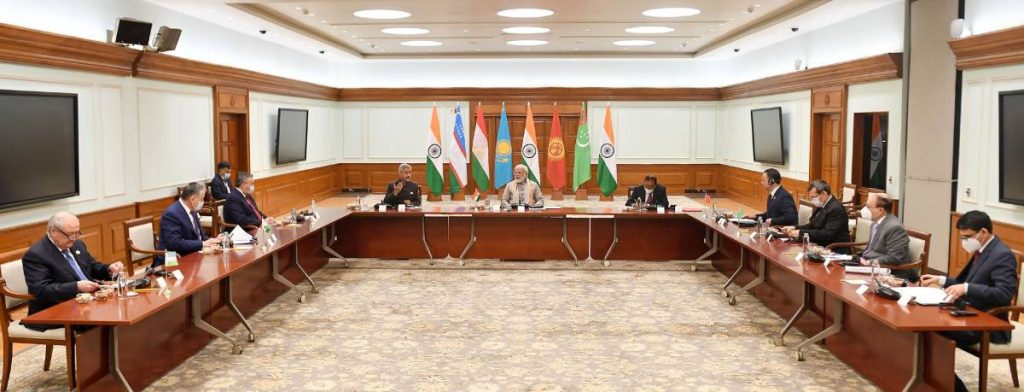
Central Asia is also richly endowed with uranium deposits. As per World Nuclear Association report 2020 and IAEA data, Kazakhstan has world’s second largest Uranium reserves at 15%, after Australia’s 28%. CAR countries emerged as the largest producer of uranium from mines – 41% of world supply, followed by Australia at 13% and Canada at 8%. Uzbekistan also has significant uranium deposits.
Ever since the breakup of the Soviet Union, Russia has been actively trying to maintain its influence in the region, against challenges from the US and China. In the 1990s, Russia used to be Central Asia’s main trading partner, accounting for 80 percent of the region’s trade. However, that situation has since changed. By 2016, while Russia’s bilateral trade volume with the region amounted to $18.6 billion, China’s bilateral trade grew to US$ 30 billion. With the Belt and Road Initiative (BRI), China is entrenching deeper and expanding wider.
United States too is sharpening its focus on Central Asia. The US State Department’s official Strategy for Central Asia 2019-2025 unambiguously states, “Central Asia is a geostrategic region important to United States national security interests, regardless of the level of United States involvement in Afghanistan…Close relations and cooperation with all five countries will promote U.S. values and provide a counterbalance to the influence of regional neighbours”. In fact, it is crucial for the US to develop robust relations with Central Asian countries, not only to be able to exercise influence in the region, but also in Afghanistan.
Driven by the common purpose of keeping the US at bay, Putin and Xi Jinping seemingly cooperate in Central Asia, in a marriage of convenience. While Moscow is striving for military and political influence, China is dominating the economics of the region.
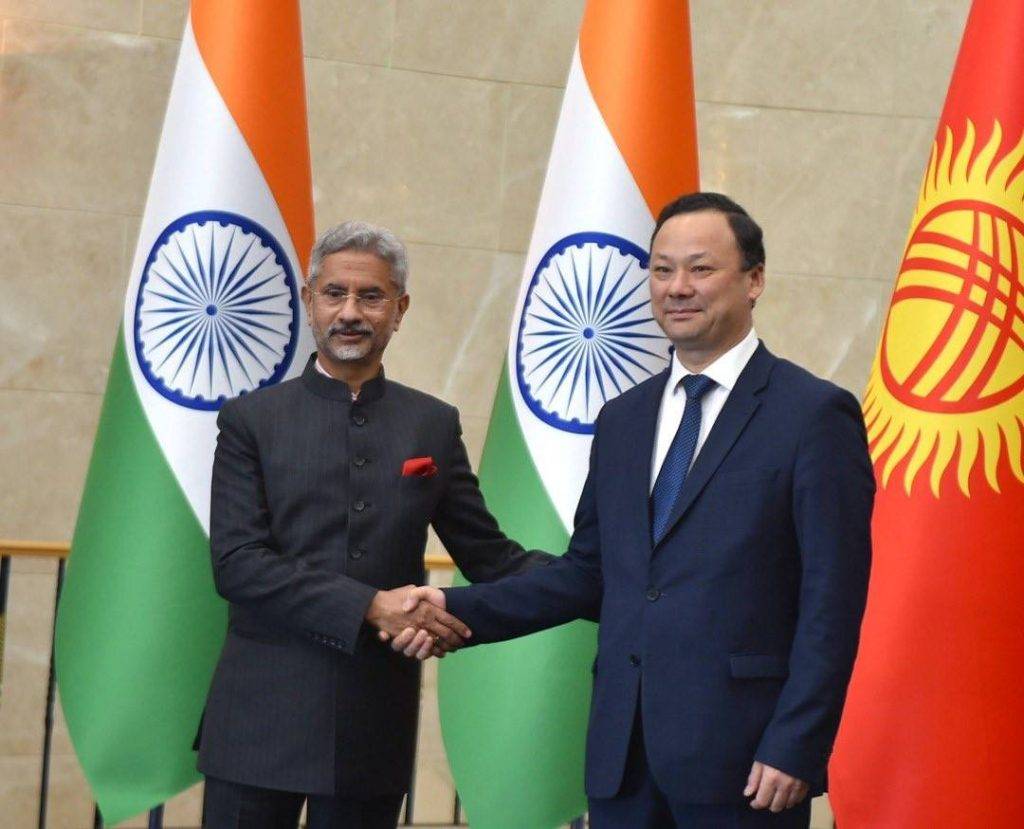
China’s engagements with the five Central Asian states have witnessed impressive growth over the last two decades. The first wave of Chinese investment, between 2007 and 2013, focused mainly on hydrocarbon extraction, processing, and transportation. Over time, Beijing has enlarged its investments in Central Asia to include agriculture, construction, chemical engineering, textile, and infrastructure. From 2015 to 2019, export of goods from Central Asia countries to China grew by 35 percent, with Kazakhstan, Tajikistan, and Uzbekistan reporting growth of over 50 percent. In 2019, China was the largest trading partner to Kyrgyzstan and Uzbekistan by imports, and Turkmenistan’s largest trading partner by exports, China’s biggest supplier of Natural Gas.
Even though China is trying to give shape to its engagement with the five Central Asian countries through a new China-led grouping called “China + Central Asia” (C+C5), not all is hunky-dory in the China-CAR equation. According to Central Asia Barometer, a Kyrgyzstan based non-profit research institute which monitors developments in Central Asia, the people are becoming ever more uncomfortable with Chinese presence in the region. In Kazakhstan, once most enthusiastic about partnership with China, there were large-scale protests when the Kazakh government was about to lease out large swathes of land to China for agricultural purposes.
In neighbouring Kyrgyzstan, failure of the Bishkek thermal power plant renovated by China, exposed Chinese corruption, resulting in arrest and trial of Kyrgyzstan’s then PM Sapar Isakov. A 2020 study by the Central Asia Barometer indicates that only 7 and 9 percent of the population in Kazakhstan and Kyrgyzstan respectively, expressed “strong support” for Chinese energy and infrastructure projects.
Against this backdrop, CAR assumes strategic significance for India, both from the point of view of geopolitics and economics. With the volatility and uncertainty over Afghanistan, and China’s Belt and Road initiative, the region’s relevance in the global geopolitical landscape has increased. In addition to the US, Russia, and China, even Pakistan is trying to gain ground as it struggles to cope with a more assertive Taliban in Afghanistan.

India’s engagement with the region reached its first milestone when Prime Minister Narasimha Rao visited Uzbekistan and Kazakhstan in 1993, followed by Turkmenistan and Kyrgyzstan in 1995. Relationship with Tajikistan was particularly significant then, as India extended logistics and material support to the anti-Taliban Northern Alliance in Afghanistan, via Tajikistan. In 2002, India and Tajikistan signed a bilateral defence agreement, under which India refurbished the abandoned Soviet era airbase at Ayni. In 2004, India acquired six Ilyushin-78 in-flight refuelling aircrafts from Uzbekistan. In 2011, India conducted its first ever joint military exercise with Kyrgyzstan.
PM Modi’s visit to Kazakhstan, Uzbekistan, Kyrgyzstan, Turkmenistan, and Tajikistan in 2015, infused fresh energy into the relations. In 2016 the President of Tajikistan and Kyrgyzstan visited India, followed by the President of India’s visit to Tajikistan in 2018.
Central Asian countries, with abundant reserves of hydrocarbon fuels and minerals, are vitally important for enlarging and diversifying India’s energy sourcing. India’s energy consumption has more than doubled since 2000. It is at present the fourth-largest global energy consumer in the wake of China, United States, and European Union. As per International Energy Agency (IEA) reports, India’s energy demand will increase more than that of any other country over the next two decades, and India will overtake the European Union as the world’s third-largest energy consumer by 2030.
As per latest data from the Ministry of Commerce, India’s total trade balance with the Central Asian countries is approximately US$ 77 million, with total exports to the region at US$ 360 million, and total imports from the region at US$ 283 million. There is plenty of potential for enhancing trade in IT, pharmaceuticals, agriculture, textiles, gems & jewellery. Health care and tourism can be further popularised. Central Asian countries must be invited to participate in various investment summits and trade shows at the national and state level. The India-Central Asia Business Council, on its part, must boost its scope, scale, and speed in reaching out to various state governments, encouraging both B2B bilateral and direct contact between state governments and Central Asian countries.
The CAR countries and India have a common understanding and recognise the threats of cross-border terrorism, terrorist proxies, terror financing, arms and drugs trafficking, radicalism, cyber abuse. India’s decades of experience in counter insurgency and counter terrorism can be utilised to promote military to military cooperation. India now has defence attaché in all the five countries, whose services can be well utilised for this purpose. India’s military to military outreach with Central Asian Countries started in 2011 with Exercise Khanjar with Kyrgyzstan. This has been stepped up in recent times with Exercise Prabal Dostyk and Exercise Kazind with Kazakhstan initiated in 2016 and 2019 respectively; and Exercise Dustlik with Uzbekistan initiated in 2019. In March 2021, Paratroopers from Turkmenistan were trained in ‘Combat Free Fall’ by the Indian Army.
India and the CAR countries can mutually contribute to capacity building and human resource development. Cooperation between specialised national institutions in finance, renewable energy, information, digital and other advanced technologies is being welcomed by CAR countries. Mutual development of language skills will certainly help overcome the language gap.
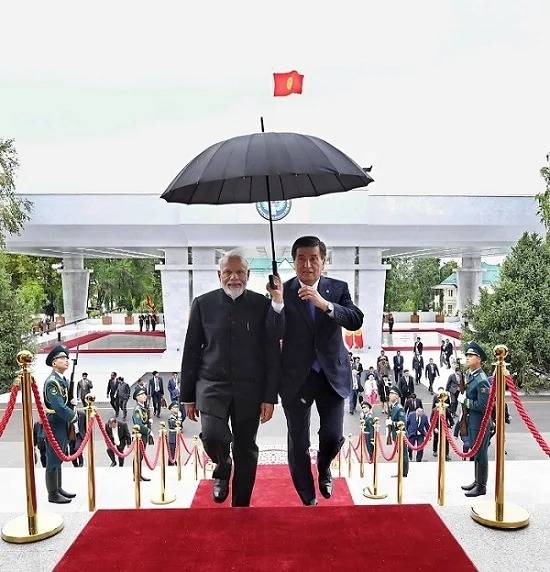
Geographical connectivity has been ‘the challenge’ primarily because of Pakistan’s intransigence, and the instability in Afghanistan. For instance, the Turkmenistan-Afghanistan-Pakistan-India (TAPI) pipeline has been in a limbo for long; Hurdles must be overcome in the Ashgabat Transit Agreement 2018 signed between Kazakhstan, Uzbekistan, Turkmenistan, Iran, India, Pakistan, and Oman; and International North South Transport Corridor (INSTC) needs to be given a fillip. The broad consensus on utilising the Chabahar port facilities to improve connectivity with Central Asian countries needs to be actualised at the earliest.
Free from inherent problems associated with proximity, India has the opportunity to drive its relationship with the Central Asian countries by taking a strategic view. While the conjugality of convenience in Central Asia between China and Russia plays out against the US, India has the unique advantage of balance in its relationship with Russia and USA, as well as being a Member of the Shanghai Cooperation Organisation. India’s role as a responsible power in Afghanistan is well recognised now. The presence of the five Central Asian Heads of States on India’s 73rd Republic Day should herald a robust future of this strategic relationship.
(The author is former Deputy Chief of Army Staff and Kashmir Corps Commander, and Member, National Security Advisory Board) (The content is being carried under an arrangement with indianarrative.com)
ALSO READ: India’s growing ties with Russia and Central Asia irks China

